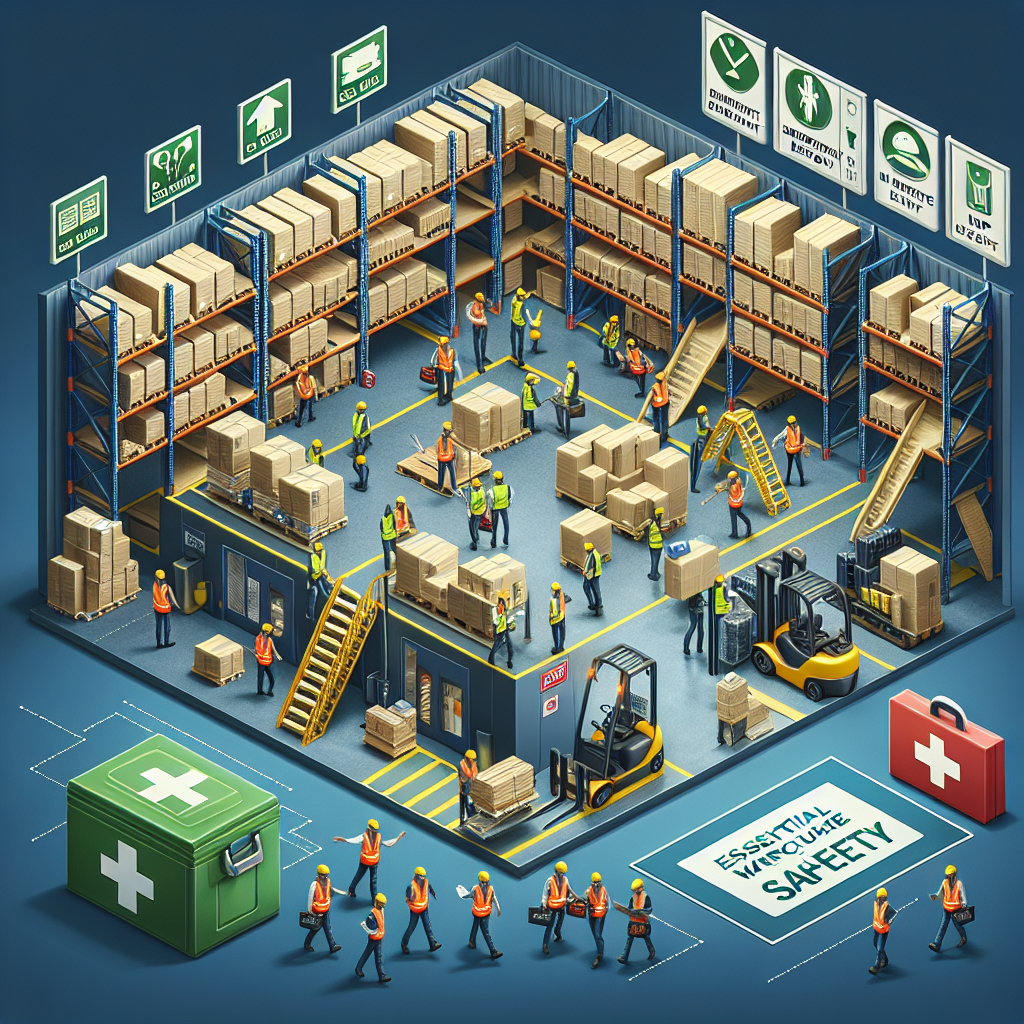Warehouses are the backbone of supply chains, serving as pivotal hubs for storage and distribution. However, they can also be hazardous environments if proper safety measures are not in place. In this article, we’ll explore essential warehouse safety guidelines that not only protect your workforce but also enhance operational efficiency.
Understanding the Importance of Warehouse Safety
Safety in the warehouse is not only about compliance with regulations; it’s about creating a culture of care and respect for the workforce. Every employee has the right to work in a safe environment, and it’s essential for businesses to prioritize warehouse safety. By investing in safety, companies can decrease the risk of injuries, reduce downtime, and save on potential costs associated with accidents.
1. Regular Training and Awareness Programs
Employee Training: The First Line of Defense
Educating employees on safety protocols and best practices is fundamental. Regular training sessions should cover:
- Proper operation of machinery
- Safe material handling techniques
- Emergency procedures
- How to identify and report hazards
Continuous Learning and Refresher Courses
Safety training shouldn’t be a one-time event. Schedule refresher courses periodically to ensure that employees stay informed about the latest safety standards and practices. Engaging employees in safety discussions and providing feedback fosters a culture of vigilance in the workplace.
2. Maintain a Clean and Organized Environment
The Power of Organization
A clean and organized warehouse reduces the risk of accidents. Implementing a systematic approach to organization ensures that products are stored correctly and pathways are clear.
Regular Inspections
Conduct routine inspections to ensure that aisles and exit routes are free from obstructions. Consider assigning designated areas for equipment, and make sure to dispose of waste appropriately.
3. Implement Proper Material Handling Techniques
Training on Equipment Use
To minimize injury risk, employees should be taught the proper way to handle materials using forklifts, pallet jacks, and other equipment. Unsafe lifting techniques can lead to severe injuries.
Use of Personal Protective Equipment (PPE)
Wearing appropriate PPE is non-negotiable in a warehouse environment. Ensure that all employees are equipped with the necessary safety gear, such as:
- Hard hats
- Safety glasses
- Steel-toed boots
- High-visibility clothing
4. Ensure Proper Use of Equipment
Regular Maintenance and Checks
Essential warehouse equipment, such as forklifts and conveyor belts, should undergo regular maintenance and inspections. This proactive approach helps prevent mechanical failures that can lead to accidents.
Safety Features and Guidelines
Always ensure that safety features on machinery are functional, such as emergency stop buttons and safety guards. Train employees to recognize when equipment is unsafe to operate.
5. Develop and Communicate Emergency Procedures
Having a Plan in Place
Every warehouse should have a well-defined emergency plan. This plan should cover:
- Evacuation procedures
- Fire safety protocols
- Response protocols for medical emergencies
Conduct Drills Regularly
Conducting emergency drills ensures that all employees are familiar with the procedures. Knowledge of what to do in case of an emergency can save lives.
6. Encourage Reporting and Acknowledgment of Hazards
Establish a Safety Reporting System
Create a transparent system that encourages employees to report unsafe conditions or practices without fear of repercussions. A safety-first culture thrives on open communication.
Recognize Safety Efforts
Recognizing employees who actively contribute to safety improvements can motivate others to follow suit. Consider rewards or acknowledgment programs that honor safety-conscious behavior.
Conclusion: Prioritize Safety for a Thriving Warehouse
Implementing essential warehouse safety guidelines is not merely about compliance; it’s an investment in the workforce and the overall health of your operations. When safety is at the forefront, everyone benefits—employees feel valued, and businesses operate more efficiently.
By focusing on training, organization, equipment maintenance, emergency procedures, and open communication, you create a safer workplace. Let’s make safety a priority, ensuring every employee goes home safe at the end of the day.
Stay Ahead with Regular Updates
Keeping up with current safety regulations and practices is crucial. Subscribe to safety newsletters or join industry forums to keep your knowledge and safety protocols updated. A proactive approach to safety is a commitment to your workforce’s well-being and your company’s success.
Remember: Safety is not a destination; it’s a continuous journey. Let’s embark on it together, one guideline at a time!


